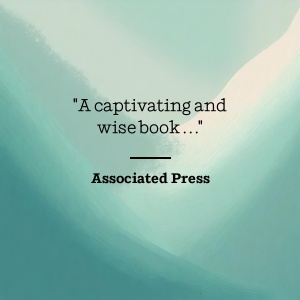Entregar a Argentina
IPara la mejor experiencia Obtener la aplicación
Servicios al cliente
Sobre nosotros
Copyright © 2024 Desertcart Holdings Limited


Full description not available



K**N
Was Rumi a born poet? Find out here...
I am only 1/3rd of the way through this book and only put it down to write this review. I chose this book because friend of mine had given me a book of Rumi poetry and I wanted to understand more about this man. I have read other books and watched some YouTube videos, but this book is by far the most engaging. I am glued to it.If you want to understand Rumi, you must meet Shams of Tabriz. If you want to understand love, read this book.
L**R
A POWERFUL WORK OF ART
The question is not "Is this a good book?"The question is "Are you good enough to read it?"I did not so much read The Forty Rules of Love as I marveled at the artistry of its construction and, I admit, as I turned the pages I congratulated myself on my ability to recognize that artistry. To hold this book between your hands and read it is to be in the presence of a master storyteller who has an important, possibly the most important, story to tell: the story of Love and how it manifests in this world.Elif Shafak, a writer famous for her novels in Turkish, wrote this book in English - flawlessly, beautifully, lucidly. Her use of the English language in its American variant reflects a masterful cultural sensibility. The book gains credibility by the use of cultural references that could only be known to and have meaning for cultural insiders. For example, a convert to Islam is said to have done so "after Kareem Abdul Jabbar and before Cat Stevens." The use of phrases such as "right as rain" and "talk the talk" indicates that Shafak does not use English as she was taught in school; she writes English as it is absorbed from years of deep conversation, wide reading and intense observation.As a true daughter of Turkey and lover of Istanbul, Elif Shafak is a bridge between East and West. Europe and Asia, Orient and Occident, reason and emotion, head and heart, scholar and mystic, left and right half of the human brain: to the materialist these are distinct entities and are doomed to endless conflict. Elif Shafak patiently assures us that, in the end, there is no difference. Running through her book like a leitmotif is the soothing and confident confirmation that dualism is an illusion and oneness is reality. All stories, characters, and plots tell of the struggle to realize truth and return once again to the state before knowledge of good and evil caused eviction from paradise.At one point in the novel the 13th century poet Rumi visits a tavern in Konya to teach and learn from its inhabitants. He says, "At the end of the day whoever wants to drink will drink and whoever wants to stay away from wine will stay away. We have no right to impose our way on others. There is no compulsion in religion." I love the way Elif Shafak slipped my favorite quote from the Qur'an (La iqraha fi din: There is no compulsion in religion, Sura 2, Line 256) into the story without reference. Muslims will know the quote and realize that it adds authority to Rumi's point. But those who are unaware that this is a Qur'anic quotation will receive the teaching fresh and pure, as if this is a new and fanciful notion of a novelist who merely wishes to bring harmony from conflict. That is what great art does: it brings harmony from conflict.Ultimately, there is only one book with one message. Each author writes that one book to explain that one message for a different audience so that all may learn and know about the primacy of love and the unity of humanity. Some books distinguish themselves and rise above the mass of others by the sheer quantity of light, truth, and goodness they convey. Mikhail Naimy's The Book of Mirdad is one example. The Forty Rules of Love is another.One sure way to tell whether a work of art is great, any work of art - a book, a film, music, painting, is whether it moves you to tears. I burst into tears on page 172, but that does not mean you will do the same. Each person will be moved by something different. It is the ability to touch the heart and stir the deepest emotions that makes a work of art powerful and beautiful and valuable. This book has that ability. There is nothing more to say.
L**A
Love and living in the moment
I loved this book which had alternating storylines in 2017-18 in Boston, and in the thirteenth century in the Middle East. Rumi’s poetry has always moved me with it’s beauty and mystery. This is the story of Rumi and his Sufi guide. The other main character, living in this century, is a woman book editor who is disillusioned with her life and falls in love with a Middle Eastern author whose book she’s reviewing. There were many beautiful quotes from Islam and allegories that provided spiritual guidance to those searching.
A**S
Wonderful Story of Rumi
Ella is unhappily married when she obtains a position as a reader for a literary agency. Her first assignment is to read and report on a manuscript titled Sweet Blasphemy by an amateur writer. It is about Rumi, a poet and a spiritual leader in the history of Islam, who is also an unconventional dervish full of scandals and surprises. As she reads about his transformation, it sets her on her own revolution.Turkey, 13th century. Following God’s guidance, Shams of Tabriz, a wandering dervish, embarks on an inner journey of Love by traveling to Baghdad to fulfill his destiny to pass on his knowledge to another person. His journey takes him farther to Konya where he meets a respected scholar named Rumi. Shams sees the suffering of ordinary people and questions if Rumi sees them or if he is one of those scholars who fail to see those suffering “while sitting in their ivory towers.”Shams puts Rumi through “trial and tests, states and stages, each of which make Rumi look more deranged in the eyes of even his most loyal followers.” But Rumi understands a purpose of all that and it’s a purpose to serve him to become a better person. “Shams deliberately fanned the flames of gossip, touched raw nerves, and spoke words that sounded like blasphemy to ordinary ears, shocking and provoking people, even those who loved him.”Their story is intertwined with secondary characters whose sufferings enforce the powerful message of the story which is loving oneself first, to be connected with the One, to mirror what we expect in return. Everything serves a purpose. Behind all hardships there is a larger scheme. There is a group of loving supporters of Rumi and there are those who despise him. A leper questions “Why was God so unfair? To me He had given poverty, sickness, and misery. To Rumi, riches, success, and wisdom.” Why?The 13th century story is a testament to author’s incredible knowledge to weave such story with so much wisdom, wisdom you can reflect on. And it also proves the author’s incredible talent for writing, weaving seamlessly the knowledge with all the characters. Touching story, engrossingly imagined and beautifully written.P.S. I’m one of those readers for whom modern timeline doesn’t work within historical fiction; however, most of this story is set in the 13th century.
Trustpilot
Hace 2 días
Hace 1 semana
Hace 2 semanas
Hace 3 días